Featured Experts

Eric Larson
Princeton Andlinger Center Senior Research Engineer

Eric Larson
Princeton Andlinger Center Senior Research Engineer
Dr. Eric Larson is a Senior Research Engineer at Princeton’s Andlinger Center for Energy and the Environment and a lead author of the Net-Zero America Report – a Princeton University research initiative that provides five pathways to achieve net-zero emissions in the US by 2050.
He is also a Senior Scientist at Climate Central, a nonprofit that researches and reports on the science and impacts of climate change.
Featured In:
In this Episode
Pledges to achieve “net-zero” emissions are proliferating from companies and countries alike. However sincere these commitments may be, they rarely include specific plans to achieve that ambition.
The Net-Zero America Report from Princeton University provides a roadmap for how we might achieve net-zero emissions in the United States, including five specific paths and the conditions these scenarios must meet.
We spoke with Dr. Eric Larson, lead author of the Net-Zero America Report to better understand these pathways. Watch now to learn how the US might achieve net zero emissions by 2050.
Related Media:


Climate Now: Jun 25, 2021
Net-Zero by 2050 with Eric Larson
What are the possible paths and necessary steps to achieve net-zero emissions in the United States by 2050? Which energy sources could sufficiently decrease our reliance on natural gas and oil to meet that target? And how much will those new energy sources nee


Climate Now: Jun 7, 2021
Climate Projections with Sergey Paltsev
Dr. Sergey Paltsev, Deputy Director of MIT’s Joint Program on the Science and Policy of Global Change, spoke with Climate Now hosts James Lawler and Katherine Gorman about climate projections and the tools he and his colleagues at MIT use to communicate


A Climate Change Primer Ep 2
How dirty are we?
Global greenhouse gas emissions reached a staggering 52 gigatons of CO2-warming equivalent in 2020. Our episode puts this number into historical context, parses our global emissions by country and economic sector, and delves into the key economic and demographic drivers of emissions worldwide.
Episode Transcript
In 2018, the Intergovernmental Panel on Climate Change, known as the IPCC, consisting of professional scientists from around the world, released a special report saying that limiting warming to 1.5 degrees – well below 2 degrees Celsius – is critical to avoid the most catastrophic effects of climate change[1]. The words of the Paris agreement state that in order to achieve this long-term temperature goal, the signees of the agreement will aim to “achieve a balance between anthropogenic emissions by sources and removals by sinks of greenhouse gases in the second half of this century…”[2]. This balance between emissions and sinks is known as net-zero emissions.

As a result of already increasing threats from climate change and pressure from activists, investors, and employees, major corporations across many economic sectors have pledged to transform their business operations so that their CO2 emissions are net-zero by 2050[3]. The list of companies making these pledges is long and growing fast, and it features many surprising names like Shell and BP, along with various material and airline companies. While corporate pledges are generally good, there’s a very wide range of rigor and scientific planning behind them. And some are clearly more fluff than substance, which we will get into in another episode. But what will it actually take Countrywide to reach net-zero in 2050 in the United States? Can we really do it using existing technologies, given our vast demand for energy in this country?
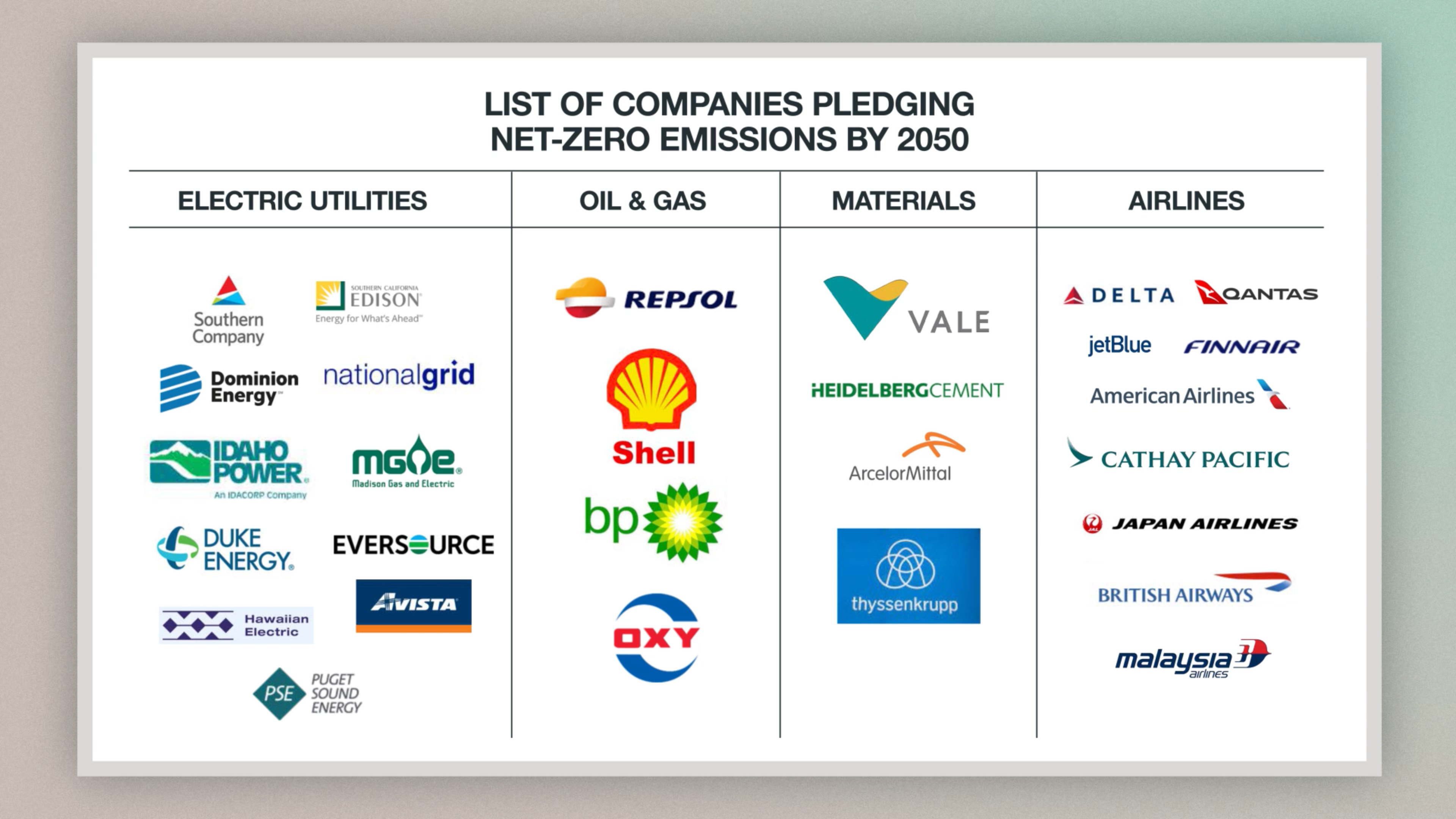
To address this question, this episode takes a deep dive into the recent Princeton University Net-Zero America report[3]. In 345 slide deck pages, full of accessible charts and tables and explanations, this report provides the most comprehensive study yet on potential pathways to reaching net-zero in America. It is more-or-less a blueprint to inform political, business, and societal conversations regarding the opportunities and the challenges involved. We spoke with one of the lead authors on the Net-Zero report, Dr. Eric Larson.
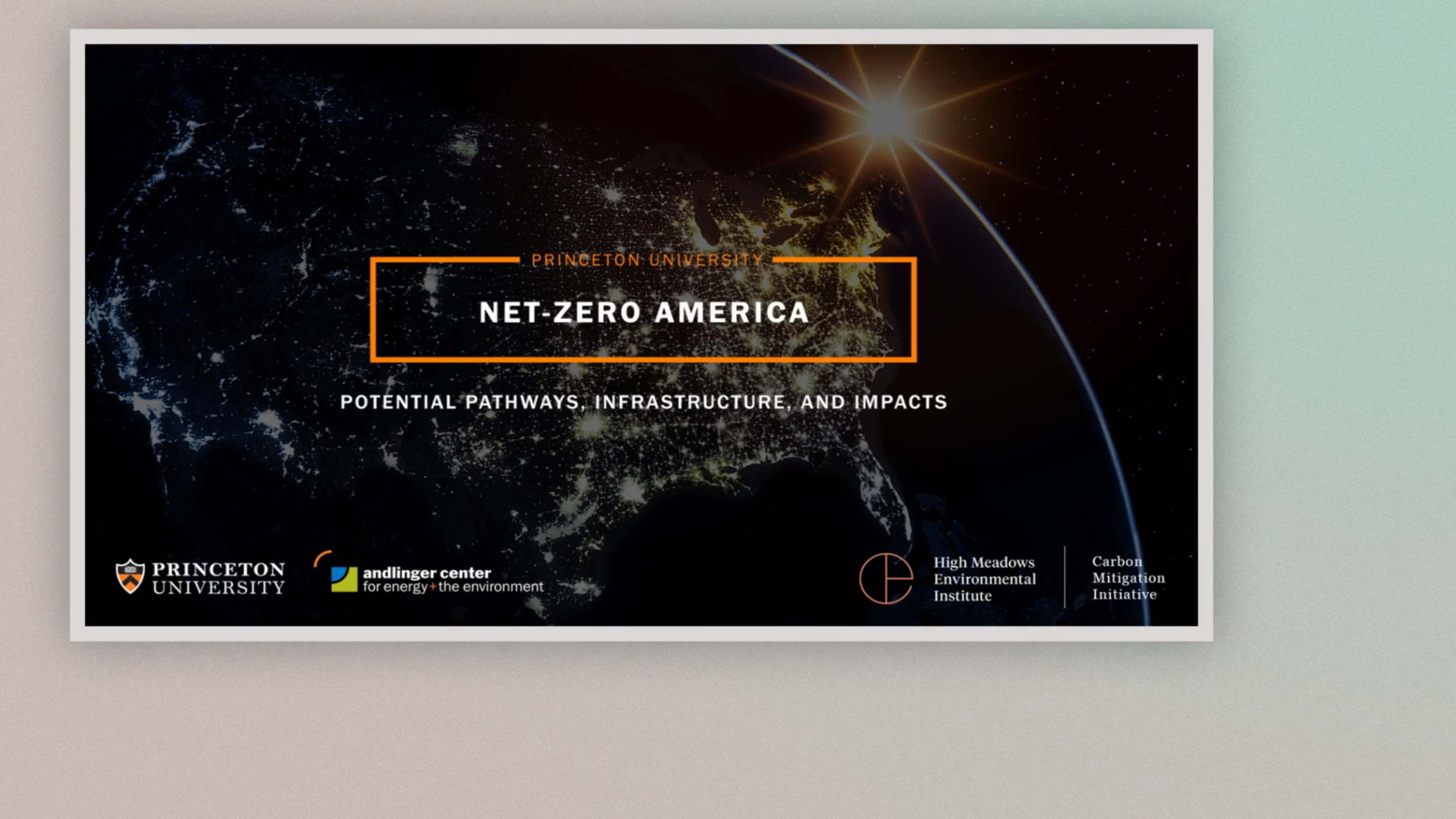
Dr. Eric Larson:
The basic approach was to start with energy service demand projections that are sort of official projections of where we expect to go as a country. Energy service demands means things like vehicle miles traveled, square footage in buildings that’s heated and cooled, tons of steel that we make, and other industrial outputs. Those are the services that we want from energy, how we deliver those services depends on how we structure our energy system. Today, it’s largely dominated by fossil fuels to get those services done. We took the projections of the US Energy Information Administration, and then we said, how are we going to meet those demands? And we set up our modeling. It optimizes the mix of technologies that are available to the model and minimizes the cost of the overall energy system over the whole transition.
The report focuses on dialing three key variables up or down to show a spectrum of strategies or pathways to reach net-zero in America. Those three variables are:
1) electrification, which is how well we’re able to electrify things like our homes, our offices, and our vehicles;
2) renewable energy infrastructure like wind and solar and transmission to meet those new electrification demands;
3) to what extent can we switch to biofuels for operations that are not so easy to electrify.
The setting of the levels of each of these three variables determines a unique path based on which other variables are set. So as to achieve net-zero emissions. Once these variables are set, the modeled output levels are what would need to be achieved in order to reach net-zero by 2050, given other constraints that are imposed. The authors show that there are at least five so-called pathways, which represent edge-case scenarios along a much wider and more or less continuous spectrum.
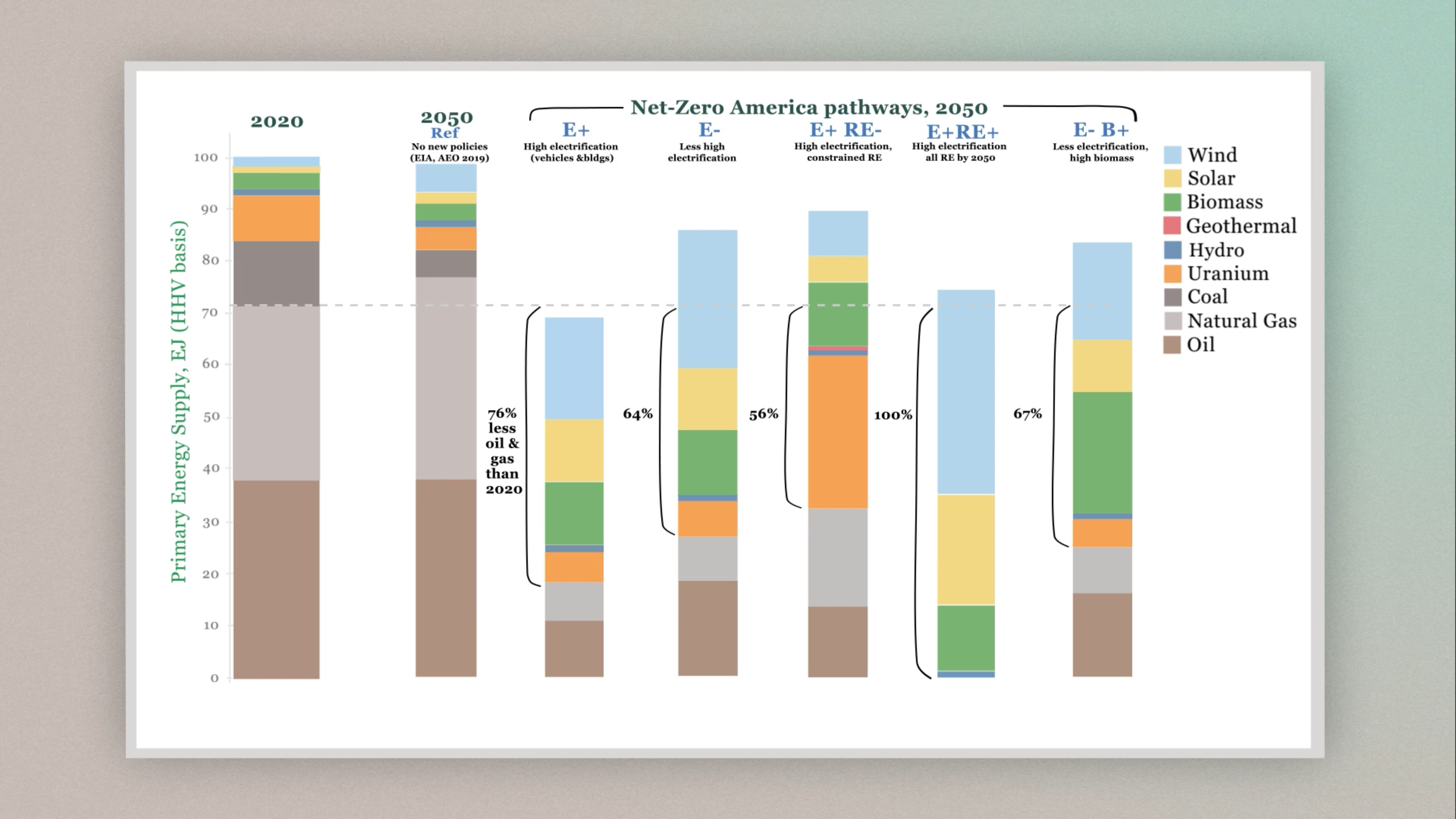
Let’s first take a look at the reference, which shows the energy mix we are using today. Oil and gas provide approximately 70% of our energy today, coal 11%, uranium for nuclear energy around 8%, and then hydro, geothermal, biomass, solar, and wind, approximately 11% [4]. On this graph, we see that by 2050, with business as usual, we shouldn’t expect to see that mix change too much.
One scenario, the E+ pathway, assumes aggressive electrification of buildings and transport, which would lead to about a 76% reduction in oil and gas by 2050.
The E- pathway assumes less aggressive electrification, which would lead to a 64% reduction in oil and gas by 2050.
The E+ RE- pathway maintains the electrification level of E+, and assumes that renewable infrastructure like wind and solar and transmission is built at rates similar to what we have already seen historically. Because this case has limited renewable energy infrastructure, under this scenario, we would need to capture and store higher levels of CO2, and increase nuclear energy production, resulting in a 56% reduction in oil and gas use by 2050 from today’s levels.
The E+ RE+ pathway also maintains the electrification level of E+ and assumes that we are able to supply 100% renewable energy by 2050, reducing oil and gas use to zero. It also assumes no reliance on new nuclear plants and no further development of underground carbon storage.
Lastly, the E- B+ pathway assumes an electrification level of E-, and in order to reach net-zero in this scenario, a higher supply of biomass-based liquid fuels is required to allow us to meet liquid fuel demands of non-electrified transport. This results in a 67% reduction in oil and gas use by 2050.
So, in all five scenarios we see coal use disappear by 2030 and fossil fuel use down by 56-100%. All five scenarios get us to net-zero by 2050, with biomass – a negative emission energy source when you combine it with carbon capture and storage – making up for the oil and gas emissions that still might occur in the scenarios where they are still a piece of the energy pie by 2050.
The Net-Zero America report also analyzes in great detail six pillars needed to support the transition to net-zero:
- Efficiency and Electrification
- Clean Electricity
- Zero-Carbon Fuels
- CO2 Capture and Storage
- Non-CO2 Emissions
- Enhanced Land Sinks
Dr. Eric Larson:
All six of these pillars we find we need to support any of the five transition pathways that we developed. The structure comes down. If we can have all of these six of these pillars. So in the case of efficiency and electrification, the idea there is what I think a lot of people appreciate who have been involved with energy over the recent history, is that the less energy you need to supply the better. And so efficiency means you’re doing the same thing with less energy input. And when you electrify things, there’s a big efficiency benefit that comes with that along with the fact that you now need electricity rather than fuels to supply the service that you’re after.
Electrification provides large reductions in energy that is currently being consumed for transportation and heating of buildings. This is possible because electric drive trains for vehicles and electric heat pumps for buildings are more efficient than using fuels for those purposes. The reduction in energy use through electrification and efficiency gains could be as much as 23 to 32%.
The second pillar is clean electricity, such as wind and solar generation and transmission. Wind turbine and solar energy technology have come a long way in the last couple of decades to the point where they are cost efficient enough to compete in the marketplace and reduce our reliance on fossil fuels [5]. However, these sources of renewable energy are still variable and cannot be relied on 24/7. So what to do when we don’t have enough wind or sun? Some say that the only solutions are to build more batteries or turn to nuclear power. However, the models in this report emphasize a different technology: gas turbine generators. Gas turbines can be turned on whenever we need them. They are a low capital cost option in wide use today for balancing out energy supply. In the future, we should be able to scale biofuels so that generators can also be powered with hydrogen instead of natural gas. Nuclear energy only played a major role in one scenario, in which renewable energy was constrained, because costs to build and maintain nuclear energy are high, and the model was designed to select the most cost-effective technologies.
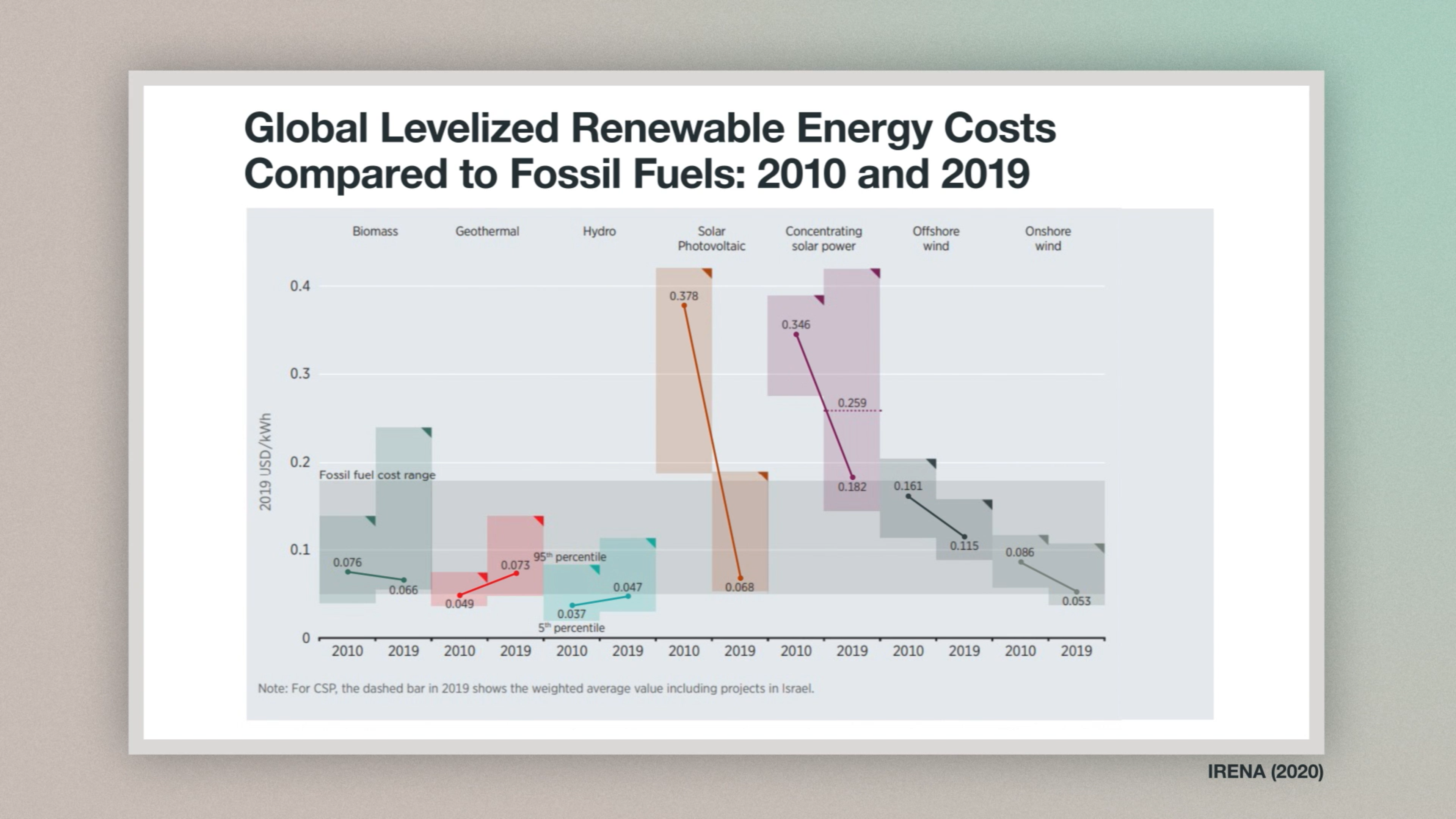
The third pillar is zero carbon fuels and bioenergy. This means scaling up biofuels like high-energy grasses and leftovers from farming and from forestry.
Dr. Eric Larson:
Biomass is critical in our scenarios because it’s a source of carbon that comes as a result of growing plant matter. And that takes CO2 out of the atmosphere. And so when we use that plant matter for energy and put that carbon back into the atmosphere, we have a sort of carbon neutral system, right? And, and that carbon is very important in making fuels.
For these models, biomass is largely a negative emission energy source because CO2 produced when converting biomass to fuels or electricity can be captured and stored. Hydrogen made from biomass is an important fuel in these models during the 2030s and 2040s. That said, concerns about using croplands for fuel, instead of food, makes this a controversial solution. However, only one of the five pathways allows for cropland to be converted to bioenergy crops. All other pathways keep current cropland as cropland through 2050.
Next, there is enhancing our capacity to capture CO2 and store it underground. In the United States, there are several regions that have been found to have the potential capacity for large CO2 storage. However, the largest region available for this technology is along the Gulf coast.
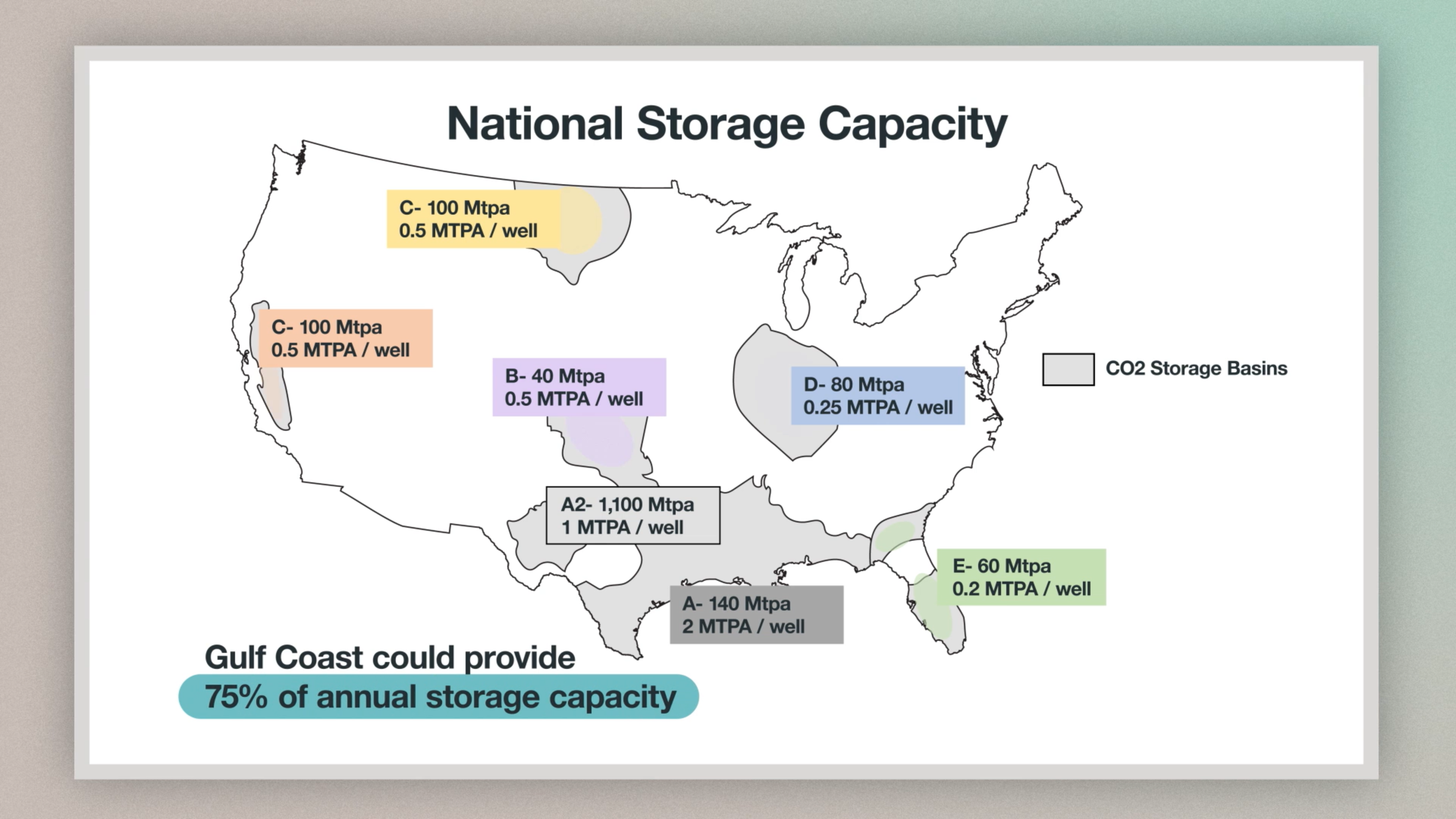
For the fifth pillar, related to reducing non-CO2 emissions, the idea here is to address emissions like methane and nitrous oxides, which primarily stem from agriculture and energy use. While electrification will play a part in removing methane as a by-product of energy production from natural gas, eliminating agricultural emissions is also very important and more challenging, though some solutions are already being tested.
And lastly, we have the sixth pillar which involves enhancing land sinks. We will dive deeper into this topic in a later episode, but it only makes sense to harness the power of forests and agriculture to capture and store carbon in soil and plants.
The Net-Zero America report is a valuable tool for understanding the spectrum of approaches to going net-zero. Check out our full length podcast with Dr. Eric Larson, where we go into further detail on how he and other researchers designed this incredible report and what they found, or check out our newsletter. In another episode, we’ll dive deeper into how much the energy transition will cost, the benefits of a net-zero economy, and the challenges faced by policymakers, investors, and engineers. For the full list of planned episodes, to sign up for new releases and more, visit climatenow.com. Thanks so much and see you next time.
Episode 3.1 Net-Zero by 2050 Sources
1. IPCC, 2018: Global Warming of 1.5°C. An IPCC Special Report on the impacts of global warming of 1.5°C above pre-industrial levels and related global greenhouse gas emission pathways, in the context of strengthening the global response to the threat of climate change, sustainable development, and efforts to eradicate poverty [Masson-Delmotte, V., P. Zhai, H.-O. Pörtner, D. Roberts, J. Skea, P.R. Shukla, A. Pirani, W. Moufouma-Okia, C. Péan, R. Pidcock, S. Connors, J.B.R. Matthews, Y. Chen, X. Zhou, M.I. Gomis, E. Lonnoy, T. Maycock, M. Tignor, and T. Waterfield (eds.)].
2. Paris Agreement (Dec. 13, 2015), in UNFCCC, COP Report No. 21, Addendum, at 21, U.N. Doc. FCCC/CP/2015/10/Add. 1, https://unfccc.int/resource/docs/2015/cop21/eng/10a01.pdf
3. E. Larson, C. Greig, J. Jenkins, E. Mayfield, A. Pascale, C. Zhang, J. Drossman, R. Williams, S. Pacala, R. Socolow, EJ Baik, R. Birdsey, R. Duke, R. Jones, B. Haley, E. Leslie, K. Paustian, and A. Swan, Net-Zero America: Potential Pathways, Infrastructure, and Impacts, interim report, Princeton University, Princeton, NJ, December 15, 2020.
4. US Energy Information Administration, US Primary Energy Consumption by Source, 2020, accessed June 1, 2021 from https://www.eia.gov/energyexplained/us-energy-facts/
5. IRENA (2020), Renewable Power Generation Costs in 2019, International Renewable Energy Agency, Abu Dhabi.